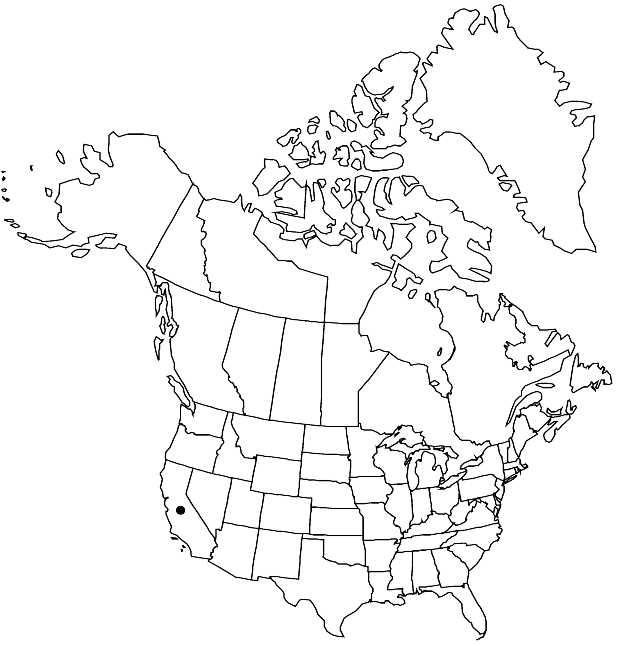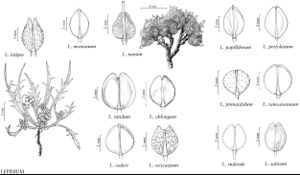Lepidium pinnatifidum
Fl. Ross. 1: 206. 1841.
Annuals; puberulent. Stems simple from base, erect, (paniculately) branched beyond base or distally, 2–6 dm. Basal leaves (soon withered, often before anthesis); not rosulate; blade dentate to pinnatifid. Cauline leaves shortly petiolate to subsessile; blade narrowly oblanceolate to linear, 1–3.3 cm × 1–4 mm, base attenuate, not auriculate, margins entire. Racemes (often paniculate), considerably elongated in fruit; rachis glabrous or puberulent, trichomes straight, cylindrical. Fruiting pedicels divaricate-ascending to horizontal, straight, (terete), 2–3.5 × 0.1–0.15 mm, puberulent adaxially. Flowers: sepals oblong, 0.7–0.8 × 0.3–0.4 mm; petals (rudimentary), white, linear, 0.4–0.6 × 0.05–0.1 mm, claw absent; stamens 4, median and lateral; filaments 0.6–0.8 mm; anthers ca. 0.2 mm. Fruits orbicular to broadly elliptic, 1.8–2 × 1.7–1.8 mm, apically not winged, apical notch 0.05–0.1 mm deep; valves thin, smooth, not veined, sparsely pilose; style ca. 0.1 mm, equaling apical notch. Seeds oblong, 1–1.2 × 0.7–0.8 mm.
Phenology: Flowering May–Jun.
Habitat: Waste places, disturbed sites
Elevation: 0-600 m
Distribution

Calif., e Europe, w Asia.
Discussion
Lepidium pinnatifidum apparently has not become a serious weed of the Californian flora.
Selected References
None.
